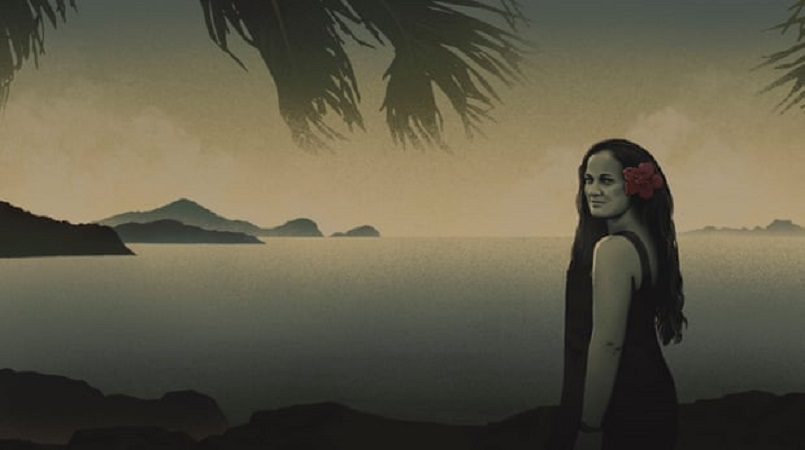
Everyone in the Pacific has stories of times the climate crisis hit our lives. For me, it is the birth of my daughter between cyclones.
My daughter was born between cyclones.
It was January 2013, and as we drove to the hospital, we passed the wreckage left by Cyclone Evan which had devastated my home island weeks earlier. Evan had been the worst tropical cyclone to hit Samoa in over two decades. There were huge holes in the road. Debris where homes once stood.
That night another cyclone – Cyclone Gary – was expected to make landfall. Massive clouds hung heavy in the sky, growing darker by the minute.
Driving, I felt so scared for my baby. I was thinking about all the things that could go wrong. What if the hospital could not withstand the winds? What if I had to seek refuge in my final hours of labour?
When we arrived I was taken to a bed. Then at around 1am just as the winds outside picked up, my daughter’s heart rate plummeted. The doctor made the call to deliver her by caesarean just as the power went off across most of the island of Upolu. As they lifted me on to the operating table I felt a deep fear. What if the hospital generator failed?
In what seemed like only a few minutes, I heard a voice, a little cry, as she made her entrance to the world. I cried too, out of sheer relief that she was safe and with very healthy lungs. We named her Aoilelagi, which means cloud in the sky, befitting the events that occurred at the time of her birth.
My story, my daughter’s story is not uncommon across the Pacific, a region that has been the first and worst hit by climate change.
Everyone in the Pacific has a story of when the climate crisis became real for us. I’ve spent the last few months doing interviews with people for the Guardian’s podcast series, An Impossible Choice, exploring the decision Pacific communities, families and entire countries have to make whether to leave or stay on their land, and I’ve heard story after story of the moment that people realised climate change had hit their home.
For Enele Sopoaga, the former prime minister of the tiny nation of Tuvalu, a low-lying Pacific country considered one of those most at risk of being submerged due to sea level rise, it was in the 1990s when he was home on a university break and he was swimming around coral reefs that used to be beautiful but were dead.
For Vanuatu politician Ralph Regenvanu, it was stepping out of his home the morning after Cyclone Pam hit in 2015, when he was foreign minister.
“And just coming up the front gate and seeing how it was just totally covered in debris, there was no way to move,” he told us. “I sort of just lost it at that point, I just thought there’s no way, I can’t think of how we are going to make any decisions to get ourselves out of what we’ve just experienced, what’s before my eyes. And I think that was when I realised that, you know how frail we are in the face of these kinds of massive climate disaster events.”
What is scary is how we have normalised these unthinkable traumatic events in the Pacific.
When Cyclone Gita hit in 2018, our neighbours who lived across the river, carried their babies and pulled their children across the river to seek refuge in our house, which stood on higher ground. They stayed for two nights. As soon as the winds died down, they packed up and returned to their home and rebuilt.
My friend Vanessa crossed raging floodwaters holding two of her children and wondered whether she would have to decide which to let go of if the waters became too strong for her to keep hold of both.
Samoans are naturally resilient, and we take these types of events in our stride. When a cyclone or flood hits us, we protect our children and our homes, and when the cyclone ends, we return to life as normal.
But of course none of the stories of what we are going through in Samoa, Papua New Guinea, Tuvalu, Marshall Islands, Vanuatu, Fiji, are normal; not the cyclones of increased frequency and severity, the king tides that turn school football fields into rivers, the rising sea levels that render entire islands uninhabitable due to erosion or salinity in the water table that stops us growing crops, not the terrible choice so many in the Pacific are having to face of leaving the land that we were born into and hoped to be buried on.
I’ve been reporting on climate events since I was 19, at my first job as a journalist for Samoa Observer. In the 20 years since then, I have consistently reported on the climate crisis, interviewing communities, leaders and covering UN climate negotiations. But this has been the most emotional story I have ever reported on.
In this podcast series, we talk to islanders who have either already migrated due to the climate crisis or those who will soon have to reluctantly leave the land of their birth, because staying may no longer be an option.
Grown men cried during the interviews as we spoke about the details of mass migration, of the mammoth job of relocating entire communities, along with infrastructure, along with their gravesites, along with the bones of their dead, whom in our cultures, still belong with the living, regardless of when they departed.
We’ve spoken to islanders who have said they would rather die than leave their homeland, so tied up is their identity, culture and spirituality in that fine sandy ribbon of land, that meanders through the lazy waves of Oceania, that is their home and the place of their ancestors.
